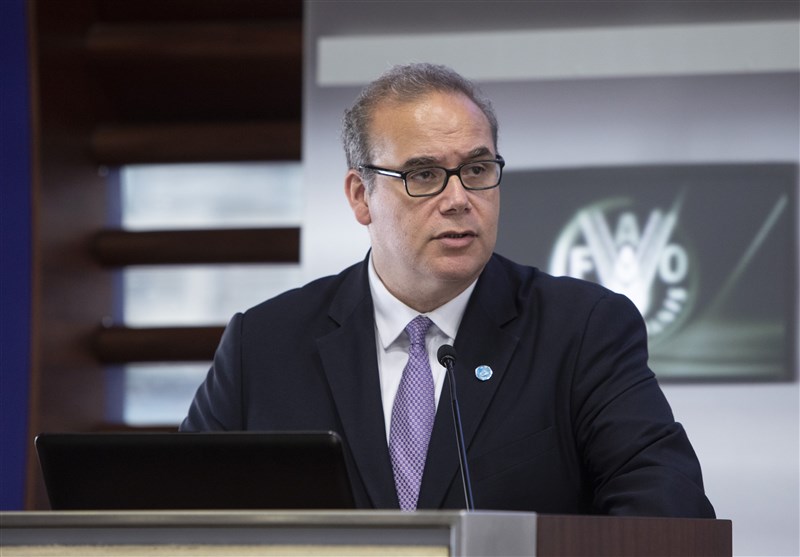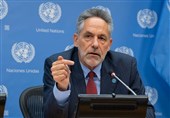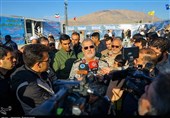FAO: Desert Locust A Threat to Iran’s Agriculture
TEHRAN (Tasnim) – The chief economist and assistant director-general for the Economic and Social Development Department at the Food and Agriculture Organization of the United Nations (FAO) warned that today the Desert Locust infestation is the “single greatest threat” to Iran’s agricultural system.
“FAO’s priority in Iran is helping the country combat the Desert Locust infestation, which is the single greatest threat to agriculture in the country today,” Maximo Torero told Tasnim.
The following is the full text of the interview:
Tasnim: How do you assess the current global situation of food security amid COVID-19? How do you expect that the pandemic to affect the global situation of food security?
Torero: There is enough food available in the world so mitigating the impact on global food security will require focusing on keeping food supply chains working and assuring that all people, especially the most vulnerable, have access to the food that is available. FAO has also tracked how economic contractions, which are inevitable due to quarantine lockdowns around the world, lead to rising numbers of undernourished people. FAO estimates that due to this economic factor alone, global hunger will rise between 14 and 80 million people. This number depends both on the scale of the economic downturn and on policy measures regarding access to food, so it depends on government responses.
Tasnim: Which countries are more susceptible to face serious challenges in securing their food security during this pandemic?
Torero: Rather than naming countries it’s reasonable to assume that the most serious challenges will be faced where hunger pressures are already highest. In the new Global Food Crises Report, particularly hotspots of vulnerable were identified in 50 countries. Most are in sub-Saharan Africa. Small Island Developing States will also face big challenges as they often rely on food imports financed by tourism, which is currently mostly blocked.
Tasnim: Has this pandemic affected global food prices? Considering the disruption that might occur in the global food trade, how do you predict the global food prices to fluctuate in the near future?
Torero: Regarding global food prices, the FAO Food Price Index has declined 10 percent from January through April. That reflects both ample supplies of the major food commodities – cereals, sugar, vegetable oils - and declining demand due to reduced income. Global food trade is vulnerable to disruption but so far problems are being addressed.
Tasnim: Regarding Iran, how do you expect the pandemic to affect the country in securing its food security and supplying its domestic demand for strategic agricultural produce?
Torero: FAO’s priority in Iran is helping the country combat the Desert Locust infestation, which is the single greatest threat to agriculture in the country today.
Tasnim: Considering the collateral effects of the COVID-19 pandemic on global food trade, is it necessary or recommended for the countries to consider self-sufficiency in supplying agricultural products?
Torero: Trade in food is essential in making sure it’s produced and available in the most efficient manner. Trade is both domestic and global. So self-sufficiency is not a master plan. That said, FAO Director-General QU Dongyu has emphasized that all countries should seek to increase food production as a way to keep supply chains alive and ease accessibility for all.
Tasnim: (It appears that) the COVID-19 reveals how countries are vulnerable if they rely on importation to supply their domestic demand for strategic agricultural products, do you agree?
Torero: Import dependency for food and agricultural products is a problem if trade flows stop or if importing countries lack the resources to pay for them. In the COVID-19 pandemic, this is a risk, for example where tourism and oil production, both of which are highly impacted by the worldwide lockdown measures, are major sources of revenue. Another factor that FAO has consistently emphasized is that many emerging countries may face currency depreciation. International institutions and assistance can help here, as can reducing as much as possible trade and excise taxes on food items.
Tasnim: Has COVID-19 caused agricultural activities to be delayed or stopped in global, regional and local scales?
Torero: There are many reports of farmers having to dispose of their produce without selling it. This is due to COVID-19-caused disruptions of the labor supply, sometimes of logistics and access to markets, and sometimes due to declining price trends. For major commodity crops, outlooks for most regions in the world are quite positive and countries should adopt strategies that assure activities continue. Major problems are on high-value commodities, i.e. fruits, vegetables, meat, fish, milk, and so on, all of which are perishable.
Tasnim: Could you please share some tangible examples of countries that have amended or implemented specific policies to support (the continuation of) agricultural activities during COVID-19 pandemic?
Torero: There are many! India has facilitated wholesale market functions that reduce the number of people who need to be physically present, thus allowing farmers to keep selling their produce. Italy has granted concessional lending to the agriculture sector. FAO has set up an open portal, the Food and Agriculture Policy Development Tool, where anyone can share and learn from measures being experimented around the world. The office of the President of Iran has participated.
Tasnim: Has FAO formulated or implemented specific plan, policy, or recommendations to assist the countries in supporting their agricultural activities amid COVID-19 pandemic?
Torero: Of course. FAO’s focus is providing policy advice where it is most needed, in lower-income countries with capacity constraints. At a global level, FAO with the World Trade Organization has made a strong case, including to the G20 countries, to commit to keeping food trade flows open. At a country level, FAO is also busy at ground level, for example having helped rural farmers in Pakistan develop tunnel farms allowing them to grow fresh and high-nutrition produce that would be hard to cultivate given the local climate.






